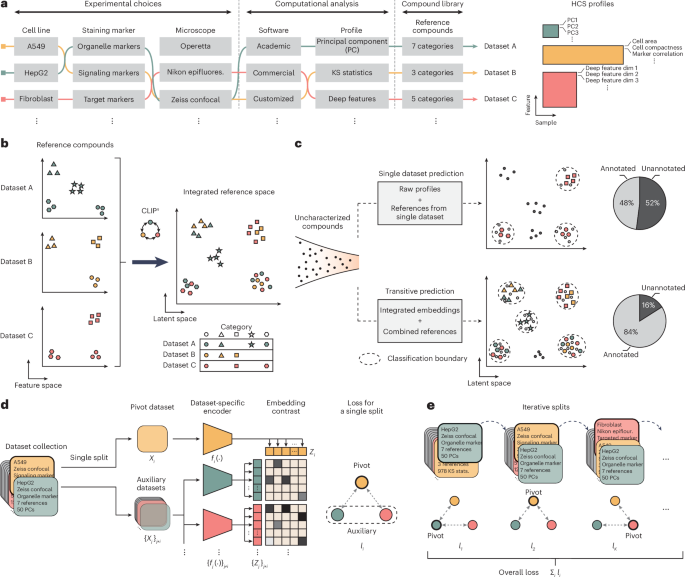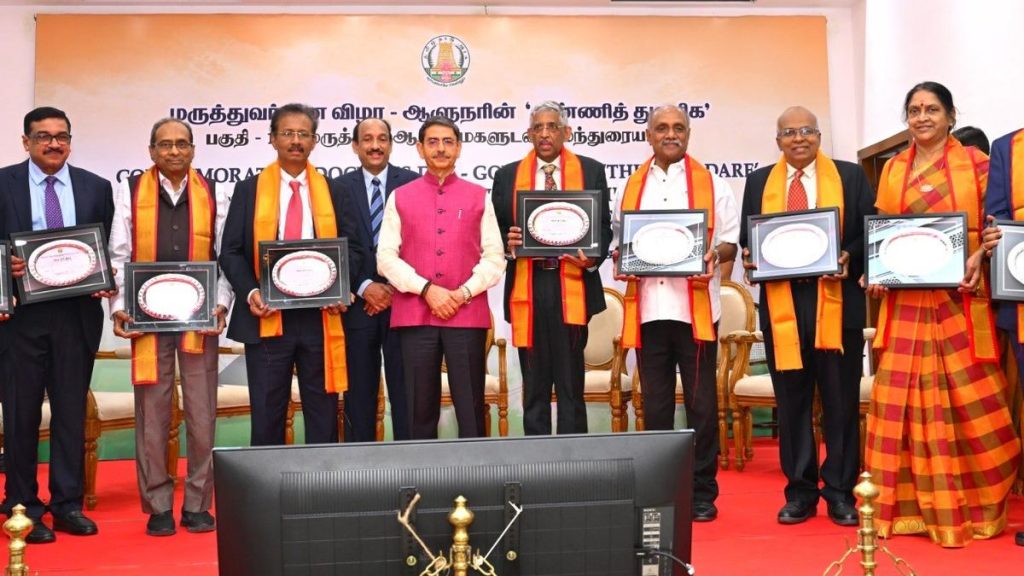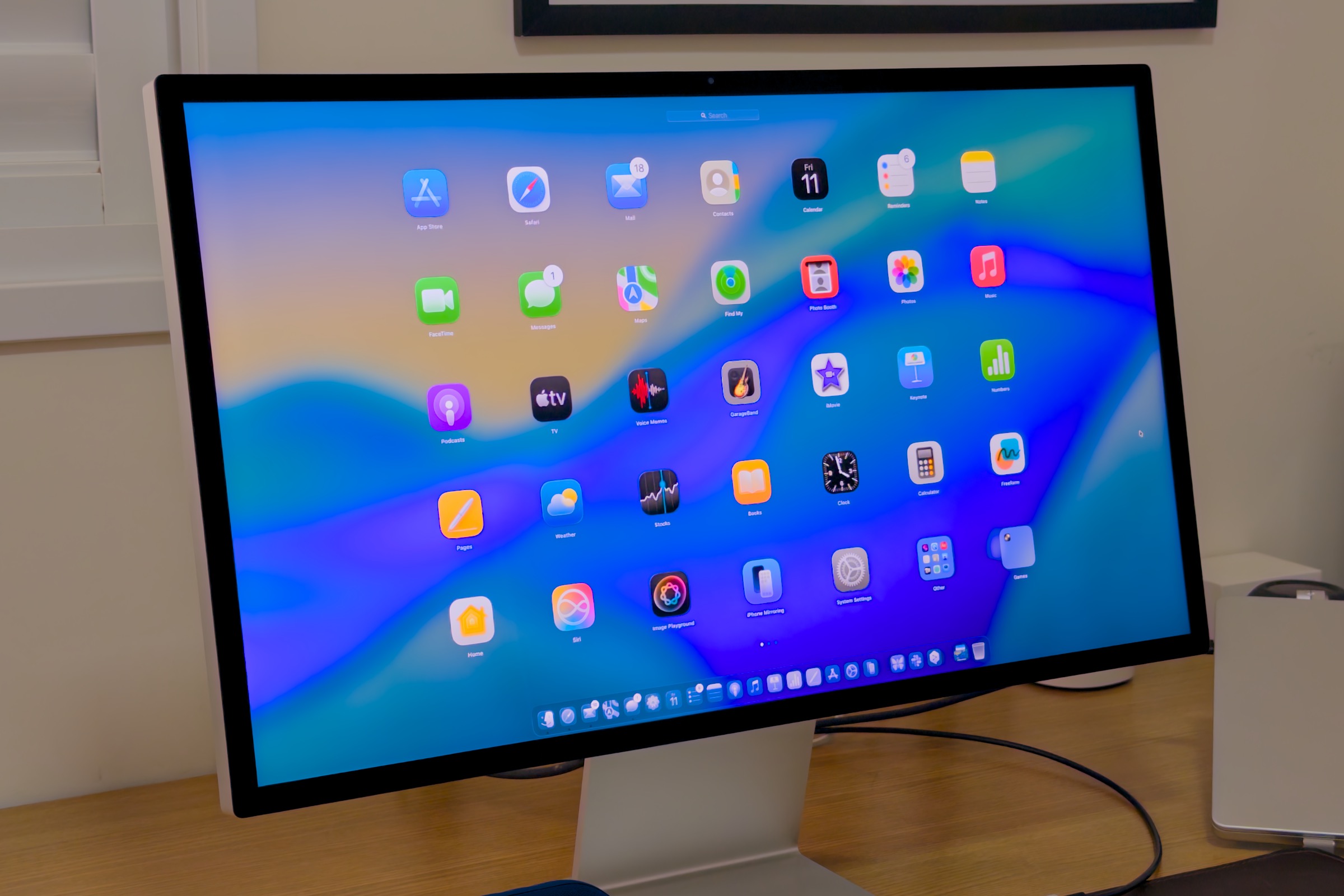Now Reading: Predicting Small-Molecule Functions Using High-Content Screening Tools
-
01
Predicting Small-Molecule Functions Using High-Content Screening Tools
Predicting Small-Molecule Functions Using High-Content Screening Tools

Quick summary:
- The source text lists references of scientific articles related to advancements in drug discovery, focusing on computational methods, chemical space exploration, proteomics, and RNA sequencing technologies.
- Key areas mentioned include high-throughput screening techniques (DRUG-seq), neural progenitor cell studies for schizophrenia treatments, quantum-based machine learning for chemical compound space analysis, and single-cell RNA applications in drug development.
- Proteomics emerges as a critical domain with emphasis on its role across mass spectrometry-based target discovery frameworks. Cancer drug research discussions highlight small molecule discovery opportunities.
Indian Opinion Analysis:
The rapid innovation in drug discovery processes outlined here underscores the importance of leveraging advanced technologies for pharmaceutical advancements. From India’s viewpoint, the integration of tools like machine learning and transcriptome profiling could bolster efforts to tackle burdens such as infectious diseases or cancer cases. Encouraging collaborations between academia and biotech industries can lead to transformative changes in public health outcomes while enhancing scientific competitiveness globally. Indian policy needs alignment towards fostering research environments conducive to modern molecular sciences for long-term healthcare self-reliance.Read more: Chemical Space ExplorationQuick Summary:
- The news article highlights advancements in small-molecule drug discovery and screening, with a focus on image-based chemical screening methodologies.
- Pioneering tools include automated microscopy, high-content imaging, and deep neural network analyses applied to biological assays.
- Publications like Science, Cell, and nat. Chem. Biol. have documented thes innovations and their potential applications in developing drugs efficiently.
- Indian researchers such as Agarwal et al.,along with collaborative global efforts,contribute to this growing domain of drug repurposing and optimization.
Indian Opinion analysis:
Advancements in small-molecule drug discovery present significant opportunities for India’s pharmaceutical sector, especially considering its role as a global supplier of affordable medicines. With an emphasis on machine learning-driven analysis and automated microscopy techniques, there is potential for India’s research institutions and biotech startups to lead innovation in areas such as drug repurposing or novel therapies aligned with local healthcare needs. While the ecosystem shows promise due to existing collaborations between Indian researchers and international peers mentioned in the study references above, overcoming infrastructure bottlenecks will be critical for sustainable progress.
Quick Summary:
- Researchers in India are increasingly utilizing advanced imaging and high-content analysis techniques for cellular and molecular studies.
- Among recent methodologies, “multiplexed protein maps” and “high-dimensional profiling” have gained traction.
- Experiments conducted across cellular states aim to integrate visual data with gene expression for precise targeting in pharmacological research.
- Applications cited include drug screening against diseases like Leishmania,autophagy inhibitors,and adenovirus transmission.
Indian Opinion Analysis:
India’s adoption of high-content image-based approaches marks a clear progression in biotechnology and pharmaceutical innovation. These methods align well with global trends, enabling deeper understanding of cellular processes which can drive therapeutic advancements. This technology could address critical issues such as neglected tropical diseases or drug-resistant pathogens that disproportionately impact developing nations. By fostering collaborations between academia and industry for expansive datasets like those mentioned, India’s research ecosystem can position itself as a major contributor to cutting-edge science while addressing localized health challenges.
Read More: [Provided link]Quick Summary:
- The article discusses research trends in phenotypic drug discovery, notably focusing on the advancements in image-based screening technologies, such as Cell Painting.
- Methods using CRISPR-Cas9 and deep learning are being integrated with high-content screening to analyze large-scale phenotypic data.
- Various studies cited highlight efforts to identify modulators of autophagic flux and mechanisms of drug action by correlating cellular images with genetic or chemical perturbations.
- Image-based profiling is emphasized as a tool for analyzing single-cell phenotypes. Technologies like automated analysis and integrative tools are enhancing data accuracy for drug discovery applications.
Indian Opinion Analysis:
Phenotypic drug discovery approaches, including those leveraging imaging systems like Cell Painting and deep learning algorithms, could hold significant implications for India’s pharmaceutical sector. With an annual market growth rate that positions India among the global leaders in generic drugs production, such tools provide opportunities to innovate local R&D capacities while addressing challenges like cost-effective healthcare solutions.
If Indian institutions integrate these cutting-edge methods into their research frameworks-particularly through government-supported initiatives-this may further enhance India’s capabilities in precision medicine development, potentially setting a benchmark for affordable treatments worldwide.
Read more: https://doi.org/10.2174%2F2213988501408010003Quick Summary
- Researchers have developed techniques for high-content phenotypic screening, which assist in identifying optimal cell lines and studying molecular circuits.
- A focus has been placed on the PI3K/AKT/mTOR pathway for cancer therapy, utilizing novel platforms such as Perturb-Seq and RxRx3 to map biology.
- Tools like phenopushing platforms are enabling rapid cellular adaptation insights under acute hypoxic stress conditions.
- The field continues expanding with data-driven processes,including stochastic optimization methods like Adam.
Indian Opinion Analysis
The advancements described reflect global progress in biotechnology and drug discovery that India could leverage to strengthen its healthcare sector. By incorporating cutting-edge screening tools into indian research facilities, the country can accelerate medical innovation while tapping into precision medicine frameworks tailored for local health challenges.Continued focus on pathways like PI3K/AKT/mTOR is crucial given India’s increasing cancer burden; targeted therapies will help ease this public health issue significantly. For India’s biotech industry, these developments underline the importance of fostering research collaborations globally to remain competitive in such transformative scientific areas.read More






















